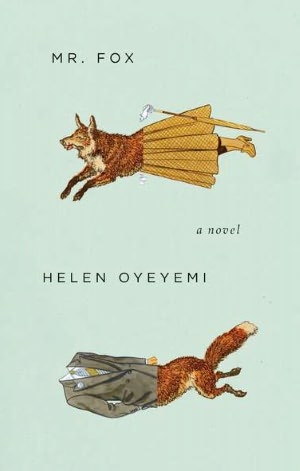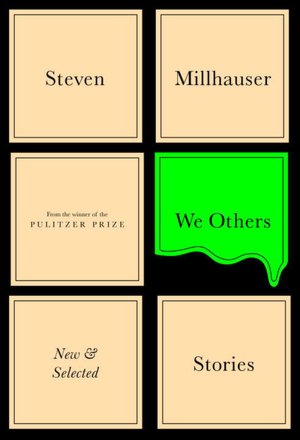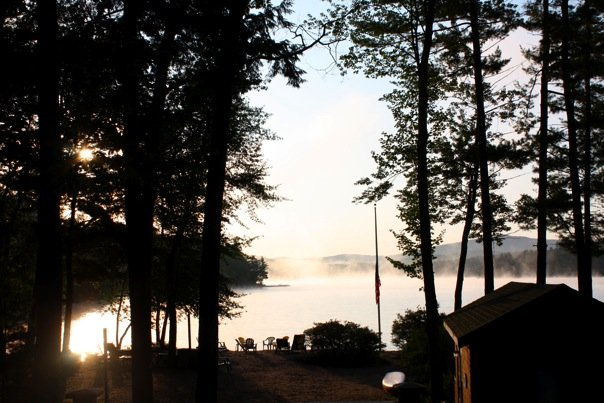 There is a house---a camp, really---on a lake in New Hampshire that is owned by my husband's extended family. It houses many generations of strong women; a matriarchal household in every sense of the word. Bought in 1948 by my husband's great uncle and his wife, many of the women who now run the house during the summer and collectively supervise their kids running through the woods and swimming in the lake grew up traipsing through the same woods and swimming in the same waters. It's a family with deep roots and a well-documented tree, but one that is also made of people who have been brought in and enmeshed through skinny dips and grilled hot dogs. Stand in the kitchen long enough, and you'll hear one of the women say "did you hear about the time when..." before the rest of them break out in peals of laughter that carry down to the lake and across the water. The more time you spend here, the more clearly the ghosts materialize and give a sense of tradition to the rhythm of the day that has survived with the minimal necessary evolutions for over 60 years. Claude and Phyllis (the couple who bought camp) skinny dipping early in the morning and serving hot dogs and milkshakes for lunch; the bouncing Jack Russell terrier begging to be let in by appearing in two second intervals in the open top half of the Dutch door on the porch (after chasing a squirrel into its hole and getting his face stuck in its burrow); my mother-in-law first learning to waterski by sitting on the shoulders of her cousin as the boat pulled them both up. In these stories, the men are key players to be sure, but their narratives remain peripheral. The driving characters of the stories of camp are the women.
I am weaving myself into the fabric of this family, first as a girlfriend, then a wife---a friend, a mother, an aunt. The Christmas before I married Jordy, the ladies of camp bought me a beach towel with my name embroidered on it. It was to be left here for the winters, awaiting my return each July. I took the gift as a statement: just as there was a place in the hall linen closet for my new towel, there was a place in this family for me. I've come here this week for a family vacation. My in-laws are here, and my husband has a rare break from work. This is more than a vacation, though. By coming here, I get to reconnect with women (and their kids) who I see maybe twice per year, but to whom I feel viscerally connected. They've held me in hard times, called me sister in happy times, and loved me unconditionally through both. For 64 years, the women of camp have gathered by the water, surrounded by bronzed children of various ages to discuss our lives, to discuss current events, to discuss what to make for dinner, to discuss what we're reading. We call ourselves "the ladies of the beach."
There is a house---a camp, really---on a lake in New Hampshire that is owned by my husband's extended family. It houses many generations of strong women; a matriarchal household in every sense of the word. Bought in 1948 by my husband's great uncle and his wife, many of the women who now run the house during the summer and collectively supervise their kids running through the woods and swimming in the lake grew up traipsing through the same woods and swimming in the same waters. It's a family with deep roots and a well-documented tree, but one that is also made of people who have been brought in and enmeshed through skinny dips and grilled hot dogs. Stand in the kitchen long enough, and you'll hear one of the women say "did you hear about the time when..." before the rest of them break out in peals of laughter that carry down to the lake and across the water. The more time you spend here, the more clearly the ghosts materialize and give a sense of tradition to the rhythm of the day that has survived with the minimal necessary evolutions for over 60 years. Claude and Phyllis (the couple who bought camp) skinny dipping early in the morning and serving hot dogs and milkshakes for lunch; the bouncing Jack Russell terrier begging to be let in by appearing in two second intervals in the open top half of the Dutch door on the porch (after chasing a squirrel into its hole and getting his face stuck in its burrow); my mother-in-law first learning to waterski by sitting on the shoulders of her cousin as the boat pulled them both up. In these stories, the men are key players to be sure, but their narratives remain peripheral. The driving characters of the stories of camp are the women.
I am weaving myself into the fabric of this family, first as a girlfriend, then a wife---a friend, a mother, an aunt. The Christmas before I married Jordy, the ladies of camp bought me a beach towel with my name embroidered on it. It was to be left here for the winters, awaiting my return each July. I took the gift as a statement: just as there was a place in the hall linen closet for my new towel, there was a place in this family for me. I've come here this week for a family vacation. My in-laws are here, and my husband has a rare break from work. This is more than a vacation, though. By coming here, I get to reconnect with women (and their kids) who I see maybe twice per year, but to whom I feel viscerally connected. They've held me in hard times, called me sister in happy times, and loved me unconditionally through both. For 64 years, the women of camp have gathered by the water, surrounded by bronzed children of various ages to discuss our lives, to discuss current events, to discuss what to make for dinner, to discuss what we're reading. We call ourselves "the ladies of the beach."
It's funny to have such a strong connection to the history of a family that is not biologically mine (in the abbreviation-language of camp, I am an NBR---a Non-Blood Relative). In many ways, I think that spending time with Jordy's family on land that they have shared for so long binds me to his family in a more raw and fundamental way than any other could. I learned to water ski the same way and in the same water that my husband and his entire family learned; my daughter jumps off the same rocks that my mother-in-law jumped off as a little girl, and we all make a daily pilgrimage to the ice cream shop where 2 generations have worked during the summer. The oldest of the third generation will be old enough to continue the tradition next year, and we are all eagerly awaiting her employment (though our waistlines may disagree). Connecting with Jordy's family this way encourages me to love him (and them) even more deeply, and in a sense for more time. Though my time moving forward is limited, I feel like with each summer here, I get time both in the present, and also in the past. It's a richer, augmented experience when you're layering summer on top of summer on top of summer.
 I recently picked up The Big House: A Century in the Life of an American Summer Home by George Howe Colt. It's a story of a summer house, like this one, and the family that inhabits it. I just started the book, but I love the way that the house and the land are intertwined with the family and its history. The author's memories of his grandparents are similar to the memories that Jordy has, and likely similar to the memories that Emi will have as she grows up. It was handed to me as soon as I arrived, looking for something to read. I just finished 1Q84, and needed something to thumb through at the beach in-between discussions of the latest article in People or Frank Rich's column that morning. Reading is an integral weft in the social fabric of the ladies at camp. We love books, we love to read, and we love to talk about what we're reading. Here's a sample of what's made an appearance at the beach this week. If some of the reviews seem short, it's because I made people tell me what they were reading as they were running through the house on their way to the beach, the grocery store, or to watch the Olympics (the only time, save for the U.S. Open, that the television is allowed on).
I recently picked up The Big House: A Century in the Life of an American Summer Home by George Howe Colt. It's a story of a summer house, like this one, and the family that inhabits it. I just started the book, but I love the way that the house and the land are intertwined with the family and its history. The author's memories of his grandparents are similar to the memories that Jordy has, and likely similar to the memories that Emi will have as she grows up. It was handed to me as soon as I arrived, looking for something to read. I just finished 1Q84, and needed something to thumb through at the beach in-between discussions of the latest article in People or Frank Rich's column that morning. Reading is an integral weft in the social fabric of the ladies at camp. We love books, we love to read, and we love to talk about what we're reading. Here's a sample of what's made an appearance at the beach this week. If some of the reviews seem short, it's because I made people tell me what they were reading as they were running through the house on their way to the beach, the grocery store, or to watch the Olympics (the only time, save for the U.S. Open, that the television is allowed on).
Lulu, 65
The matriarch of this house, Lulu, has made it her business to extend her family. She is the wife of Claude and Phyllis' younger son, John, and is at the center (though some days she would like to be removed from it) of camp life. A fellow only child, Lulu's philosophy is that there are always enough beds, and we can always make dinner stretch to accommodate a few more. Lulu is an honorary grandmother to most of the kids here, and is an honorary mother to all of us. She is the grandmother who waterskis and swears like a sailor and finishes the crossword in the Sunday Times, and she makes it her business to keep alive the history of camp (and with it, her husband's family). When you come to camp, you inevitably hear the stories of this place, and Lulu is often the one telling them.
 Tender at the Bone, Ruth Reichel
"I love it. It's a memoir of her childhood with a very crazy mother and how food became so important in her life. She comes from a really crazy family, and she just by happenstance gets connected to a family that loves food, and she discovers that when the world isn't working well, you can make a good meal and all is suddenly right with the world."
Tender at the Bone, Ruth Reichel
"I love it. It's a memoir of her childhood with a very crazy mother and how food became so important in her life. She comes from a really crazy family, and she just by happenstance gets connected to a family that loves food, and she discovers that when the world isn't working well, you can make a good meal and all is suddenly right with the world."
Nancy, 70
Nancy's husband, Ricky, was raised with John, Lulu's husband. Both of their fathers were off fighting in WWII, and their mothers, Dot and Phyllis, moved in together. Both nurses, they were best friends, and each had two boys. They got double coupons and worked opposite shifts so that while one worked, the other watched all of the children. They shared jobs---Dot hated darning, so Phyllis did that, but Dot did all of the maintenance. The husbands were in the same medical corps in Italy. Ricky's family used to rent the camp next door when Claude and Phyllis bought this camp, and Nancy first came up to the lake when she and Ricky became engaged.
Nancy, through sheer luck, stayed up here the summer that I brought newly-born Emi to camp. She would rock Emi as Emi screamed and screamed, and she would sit with me through the seemingly never-ending nursing sessions telling me stories of her own family, in and out of which members of our family would dance. Asked about her favorite things about camp, she says, "The thing that always struck me was the intergenerational thing, the cocktail hour with the great grandparents, grandparents, aunts and uncles and kids, sharing stories and sharing time. All of the ages and stages and kids, and everyone just kind of took care of their own kids and other kids---kind of like how it is now. Oh, and coming down to the beach with all of these very professional, intelligent, highly educated women sharing stories from smutty magazines."
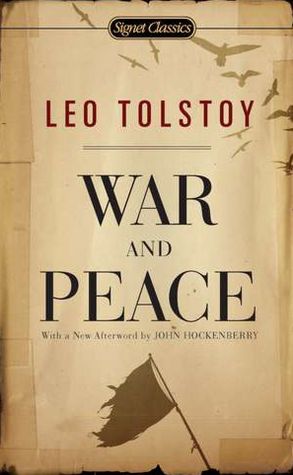 War and Peace, Leo Tolstoy
"It's a book that I never in a million years thought I would read (even though I'm an English teacher), but my book club decided they would do it. I am fully immersed in it. The first 100 or so pages were difficult just because of the many characters and getting the names straight (and feeling intimidated by the fact that it's War and Peace). But once you get over that, Tolstoy is so fluid and so all-encompassing and he understands human nature and the big picture so well, but he includes detail to make it seem here and now. The writing is a narrative, so you read it for a story, but you also get a sense of the history and the philosophical and ethical issues that people thought about at that time in Russia (and even now): the nobility and the peasants; why people go to war. You're also brought back by the everydayness of the characters that he creates, and they become real. It's a great read. We were supposed to read 200 pages and meet and read another 200 pages, but I've almost finished it because I've become so involved with it."
War and Peace, Leo Tolstoy
"It's a book that I never in a million years thought I would read (even though I'm an English teacher), but my book club decided they would do it. I am fully immersed in it. The first 100 or so pages were difficult just because of the many characters and getting the names straight (and feeling intimidated by the fact that it's War and Peace). But once you get over that, Tolstoy is so fluid and so all-encompassing and he understands human nature and the big picture so well, but he includes detail to make it seem here and now. The writing is a narrative, so you read it for a story, but you also get a sense of the history and the philosophical and ethical issues that people thought about at that time in Russia (and even now): the nobility and the peasants; why people go to war. You're also brought back by the everydayness of the characters that he creates, and they become real. It's a great read. We were supposed to read 200 pages and meet and read another 200 pages, but I've almost finished it because I've become so involved with it."
Emily, 37
Emily and I became fast friends when she started dating Jordy's cousin, Evan (Lulu's son). She is one of the funniest people I know. She was married here at the lake, and I was one of her bridesmaids. She returned the favor for me when I married Jordy. Her daughters, 4 1/2 and 2 years old, sandwich Emi in age, and the three of them are quite a sight to behold when they are galavanting together on the beach. Emily now does the Sunday crossword with Lulu, and she's the only person I know who can beat Jordy at Scrabble.
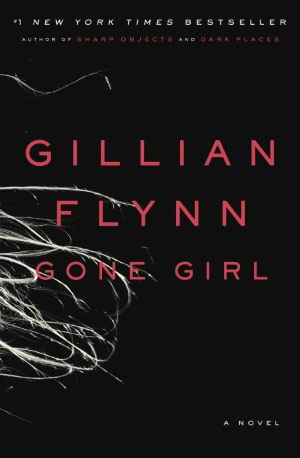 "I just finished Gone Girl, by Gillian Flynn. I loved it up until the very end, but I couldn't put it down---I was sneaking reads during work. It was a page turner, and you didn't know what was happening. It was a good mystery, and how you felt about the characters changed throughout the book at different points. I read The Art of Racing in the Rain at the beginning of the summer. It's written from the point of view of a dog---[she looks at me raising my eyebrows and goes, "I know, but it's really good."] the dog is this smart being, but because of how he was created (with a floppy tongue, no thumbs)---he's stuck with his thoughts and knowledge of things but no way to express himself. I just started reading Sharp Objects."
"I just finished Gone Girl, by Gillian Flynn. I loved it up until the very end, but I couldn't put it down---I was sneaking reads during work. It was a page turner, and you didn't know what was happening. It was a good mystery, and how you felt about the characters changed throughout the book at different points. I read The Art of Racing in the Rain at the beginning of the summer. It's written from the point of view of a dog---[she looks at me raising my eyebrows and goes, "I know, but it's really good."] the dog is this smart being, but because of how he was created (with a floppy tongue, no thumbs)---he's stuck with his thoughts and knowledge of things but no way to express himself. I just started reading Sharp Objects."
Alice and Claudia, 10
I've known Alice and Claudia (sisters, daughters of Jordy's cousin) since they were toddlers, speaking in one-word sentences and eager to investigate my shoes every time I came to their house. Watching them grow has been astonishing; if ever there were two more interesting 10 year olds, I don't know them. Alice is wonderfully imaginative and creative. This week, she made a magic wand for her brother out of a twig that she had stripped the bark off of in a striped pattern, and a vine woven around and anchored with pine sap. Claudia is thoughtful and funny and up for anything. She's also incredibly creative, and her wrists are buried in brightly colored friendship bracelets that she's made. The two sisters, along with their brother and cousins, are delighted to invite Emi to play with them, and are old enough to be able to tell her stories when she's older about her first years here.
Alice
 The Fingertips of Duncan Dorfman, Meg Wolitzer
"It's about this dude who plays Scrabble, and he has a power in his fingers to read things with his fingertips. They're in a tournament in Florida. I got it for my birthday from Grandma and Grandpa. It was on the Chautauqua reading list."
The Fingertips of Duncan Dorfman, Meg Wolitzer
"It's about this dude who plays Scrabble, and he has a power in his fingers to read things with his fingertips. They're in a tournament in Florida. I got it for my birthday from Grandma and Grandpa. It was on the Chautauqua reading list."
Claudia
 The Son of Neptune, Rick Riordan
"It's the second in a series the Heros of Olympus, which is the sequel series to the Percy Jackson series. It's about a boy, Percy Jackson, who's memory is taken by Hera/Juno, and he loses 8 months of his life with the wolf Lupa and her pack, learning to fight. Then he leaves the wolves and journeys to the Roman demigod camp and he's originally from the Greek demigod camp. I read the first one in the series and it was about a boy, Jason, who gets the same thing but goes from the Roman camp to the Greek camp, and he has to unite the camps before the prophesy can come true. It's so good, I've read it seven times."
The Son of Neptune, Rick Riordan
"It's the second in a series the Heros of Olympus, which is the sequel series to the Percy Jackson series. It's about a boy, Percy Jackson, who's memory is taken by Hera/Juno, and he loses 8 months of his life with the wolf Lupa and her pack, learning to fight. Then he leaves the wolves and journeys to the Roman demigod camp and he's originally from the Greek demigod camp. I read the first one in the series and it was about a boy, Jason, who gets the same thing but goes from the Roman camp to the Greek camp, and he has to unite the camps before the prophesy can come true. It's so good, I've read it seven times."
After a bit of questioning, Claudia admits she's read it seven times because she's already read (or can't find) the other books in the top of the boathouse, where the girls sleep. I promise to take her to town tomorrow to get a new book to read at the local bookstore. She'll read it and give it to her sister and cousins---I imagine that it will end up in one of the bookshelves in the house, waiting for Emi to grow into it. As for our trip into town, I can't promise anything, but it will likely include an ice cream cone. I know all too well that in a blink, Claudia will be old enough to drive herself, and in another one old enough for me to take her kids for her while she catches a moment to read on the beach.



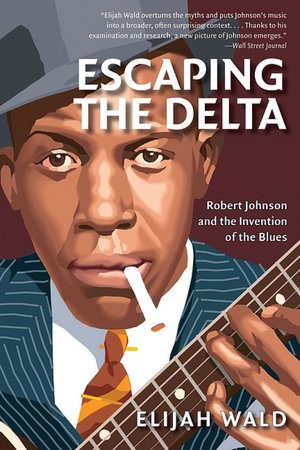 Escaping the Delta: Robert Johnson and the Invention of the Blues
by Elijah Wald
At the micro level, Wald writes of the personal exodus from the Mississippi Delta of bluesman Robert Johnson in the 1930s and his efforts to forge a career in the tough early years of the commercial recording industry. Wald simultaneously charts a broader unmapped path as he smashes his way through standard historical narratives. He takes issue with common notions in written blues history: that the genre represented a primal cry welling up from neo-African roots in the Mississippi Delta, isolated from contemporary pop music; that its early practitioners were unsophisticated musicians; that 1930s Black audiences heard the blues as a pure folk art rather than as commercialized pop music. Wald reminds readers that it is blues historians, not Johnson’s contemporaries, who elevated him to demigod status after his death. Using archival evidence for his assertions, Wald manages to scold blues revisionists and celebrate Johnson’s admirable output all at the same time. A new path indeed.
Escaping the Delta: Robert Johnson and the Invention of the Blues
by Elijah Wald
At the micro level, Wald writes of the personal exodus from the Mississippi Delta of bluesman Robert Johnson in the 1930s and his efforts to forge a career in the tough early years of the commercial recording industry. Wald simultaneously charts a broader unmapped path as he smashes his way through standard historical narratives. He takes issue with common notions in written blues history: that the genre represented a primal cry welling up from neo-African roots in the Mississippi Delta, isolated from contemporary pop music; that its early practitioners were unsophisticated musicians; that 1930s Black audiences heard the blues as a pure folk art rather than as commercialized pop music. Wald reminds readers that it is blues historians, not Johnson’s contemporaries, who elevated him to demigod status after his death. Using archival evidence for his assertions, Wald manages to scold blues revisionists and celebrate Johnson’s admirable output all at the same time. A new path indeed.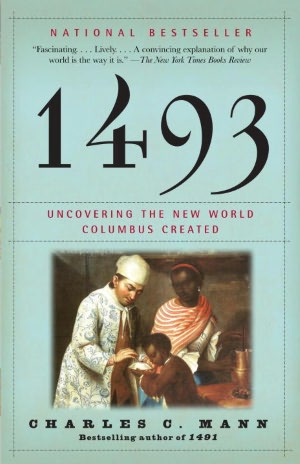 1493: Uncovering the New World Columbus Created
by Charles C. Mann
I learned of this book through an NPR interview with the author, immediately intrigued by his improbable ability to make agricultural history sound fascinating. The book does not disappoint in this regard, arguing that Columbus inaugurated the collision of previously-separate ecosystems and unwittingly launched globalization. Mann demonstrates this through quirky tales of staples such as the lowly potato, vastly entertaining as they meander clumsily through complex geopolitical contexts. Despite Mann’s fairly snappy and occasionally humorous prose, however, I often glazed over at the wealth of detail, guiltily skimming for the next cool anecdote. Additionally, Mann’s neutral stance on the ethics of globalization formed an interesting and uncomfortable undercurrent. I am more accustomed to hearing globalization roundly denounced, but appreciated the author’s encouragement to think about its positive aspects. If you’ve ever wondered how shiploads of bird guano helped reconfigure human civilization, this is the book for you.
1493: Uncovering the New World Columbus Created
by Charles C. Mann
I learned of this book through an NPR interview with the author, immediately intrigued by his improbable ability to make agricultural history sound fascinating. The book does not disappoint in this regard, arguing that Columbus inaugurated the collision of previously-separate ecosystems and unwittingly launched globalization. Mann demonstrates this through quirky tales of staples such as the lowly potato, vastly entertaining as they meander clumsily through complex geopolitical contexts. Despite Mann’s fairly snappy and occasionally humorous prose, however, I often glazed over at the wealth of detail, guiltily skimming for the next cool anecdote. Additionally, Mann’s neutral stance on the ethics of globalization formed an interesting and uncomfortable undercurrent. I am more accustomed to hearing globalization roundly denounced, but appreciated the author’s encouragement to think about its positive aspects. If you’ve ever wondered how shiploads of bird guano helped reconfigure human civilization, this is the book for you. The German Settlement of the Texas Hill Country
by Jefferson Morgenthaler
My point in mentioning this admittedly obscure book isn’t to imply that you should rush out and order it, but to make you wonder how your town or city or region Came To Be. My husband’s mother was born into one of the German communities that began forming in central Texas in the 1840s, and after a trip there we became curious about how and why these folks wound up on the other side of the world. Morgenthaler answered our questions many times over, relating how fallout from the French Revolution drove German nobles to finance the migration of underclass persons to, of all places, the republic of Texas. The book details the often-woeful and sometimes-humorous journeys of the Germans as they pushed forward in the Texas wilderness, surviving on bear meat and negotiating treaties with Comanches. Morgenthaler’s meticulously-researched book reminded me that the tale of new beginnings in unfamiliar places is the story of how all of us came to occupy our present plot of earth.
The German Settlement of the Texas Hill Country
by Jefferson Morgenthaler
My point in mentioning this admittedly obscure book isn’t to imply that you should rush out and order it, but to make you wonder how your town or city or region Came To Be. My husband’s mother was born into one of the German communities that began forming in central Texas in the 1840s, and after a trip there we became curious about how and why these folks wound up on the other side of the world. Morgenthaler answered our questions many times over, relating how fallout from the French Revolution drove German nobles to finance the migration of underclass persons to, of all places, the republic of Texas. The book details the often-woeful and sometimes-humorous journeys of the Germans as they pushed forward in the Texas wilderness, surviving on bear meat and negotiating treaties with Comanches. Morgenthaler’s meticulously-researched book reminded me that the tale of new beginnings in unfamiliar places is the story of how all of us came to occupy our present plot of earth.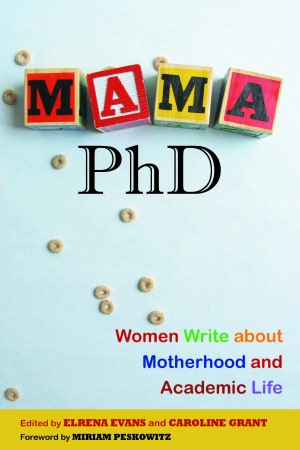 Mama Ph.D.: Women Write About Motherhood and Academic Life
by Elrena Evans and Caroline Grant, editors
Particularly germane to my own life circumstances recently was this collection of essays. By turns frustrating, funny, and affirming, it features the voices of female academics across a spectrum of disciplines, degree programs, and academic ranks. Some discuss remaining in the academy while raising children; others explore leaving to start a family. The book was sobering in its repeated structural critiques of academia’s inadequate maternity provisions. The writing of women who chose to leave university life upon having children deals honestly with the grief and deep embarrassment that often accompanied their decisions, but also points the way towards alternative career paths and new modes of satisfaction outside the academy for those with Ph.D.s. The book assured me I was not alone in my questions, struggles, and frustrations.
Mama Ph.D.: Women Write About Motherhood and Academic Life
by Elrena Evans and Caroline Grant, editors
Particularly germane to my own life circumstances recently was this collection of essays. By turns frustrating, funny, and affirming, it features the voices of female academics across a spectrum of disciplines, degree programs, and academic ranks. Some discuss remaining in the academy while raising children; others explore leaving to start a family. The book was sobering in its repeated structural critiques of academia’s inadequate maternity provisions. The writing of women who chose to leave university life upon having children deals honestly with the grief and deep embarrassment that often accompanied their decisions, but also points the way towards alternative career paths and new modes of satisfaction outside the academy for those with Ph.D.s. The book assured me I was not alone in my questions, struggles, and frustrations. Among the Mad (A Maisie Dobbs Novel)
by Jacqueline Winspear
I hope you have already met Maisie Dobbs, a relatively new yet already much-beloved female sleuth. In my mind her only peer among fictional detectives is Harriet Vane, created by the great writer Dorothy Sayers, for complexity of character and full-bodied realness. Like Sayers’ Vane, Dobbs works in the interwar period in England. The books, and Dobbs herself, are shot through with shadows and scars of the first World War, and a major thread in the series is how Dobbs’ own wartime pain slowly and haltingly gives way to new beginnings in her personal and professional life, though never in a pat or easy way. In this book, as with all books in the series, Dobbs works her way through a new mystery related to the war that gripped Europe fifteen years earlier (the book is set in 1931). She also forges new inroads into her personal relationships, an ongoing theme for Dobbs’ character after the life-altering tragedies she experienced as a nurse during the war.
Among the Mad (A Maisie Dobbs Novel)
by Jacqueline Winspear
I hope you have already met Maisie Dobbs, a relatively new yet already much-beloved female sleuth. In my mind her only peer among fictional detectives is Harriet Vane, created by the great writer Dorothy Sayers, for complexity of character and full-bodied realness. Like Sayers’ Vane, Dobbs works in the interwar period in England. The books, and Dobbs herself, are shot through with shadows and scars of the first World War, and a major thread in the series is how Dobbs’ own wartime pain slowly and haltingly gives way to new beginnings in her personal and professional life, though never in a pat or easy way. In this book, as with all books in the series, Dobbs works her way through a new mystery related to the war that gripped Europe fifteen years earlier (the book is set in 1931). She also forges new inroads into her personal relationships, an ongoing theme for Dobbs’ character after the life-altering tragedies she experienced as a nurse during the war.

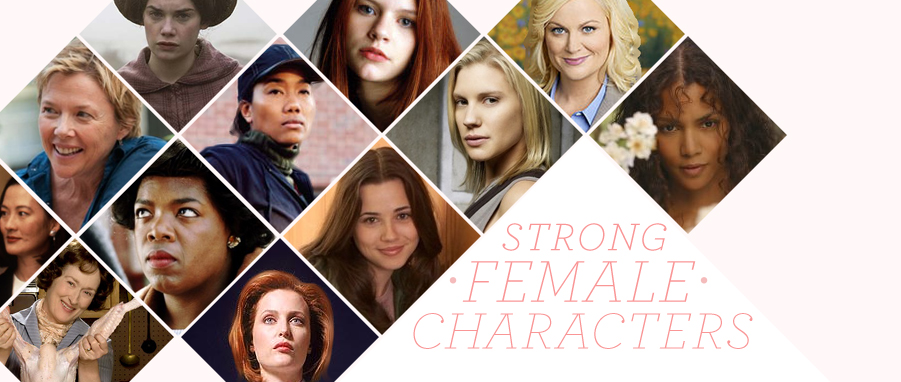
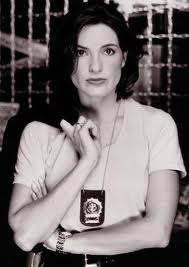
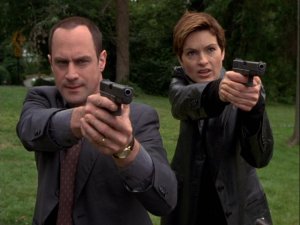
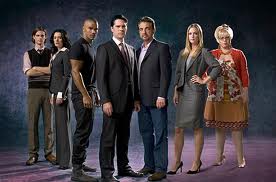
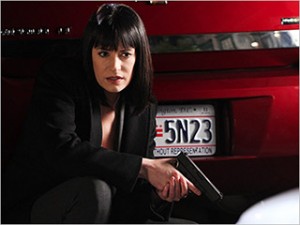

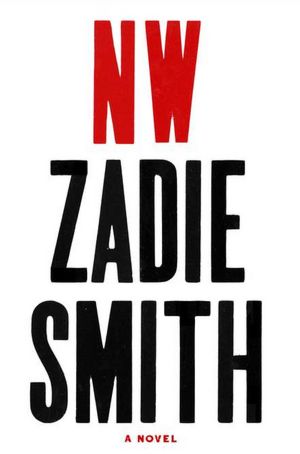
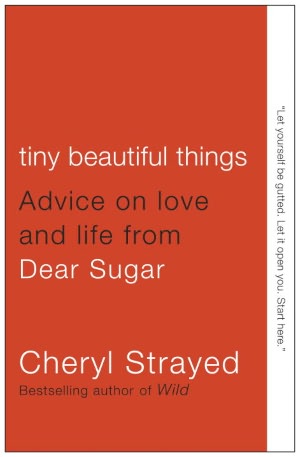
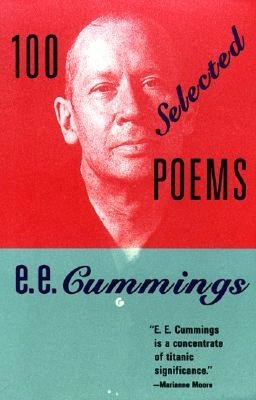
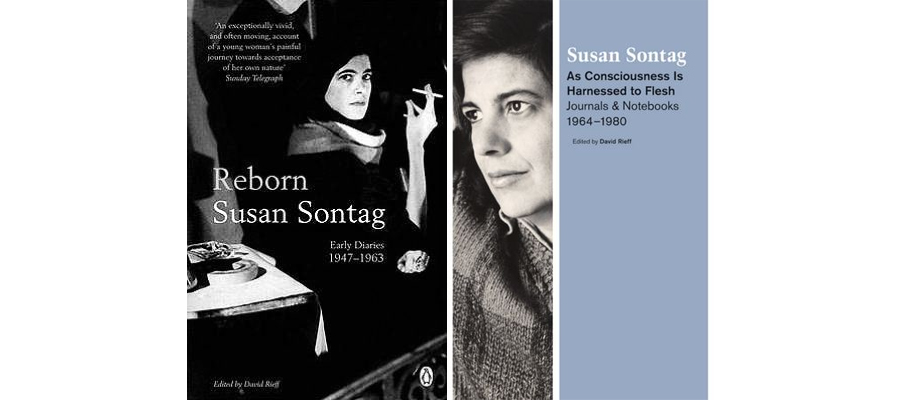





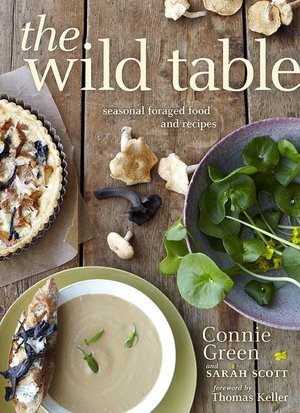





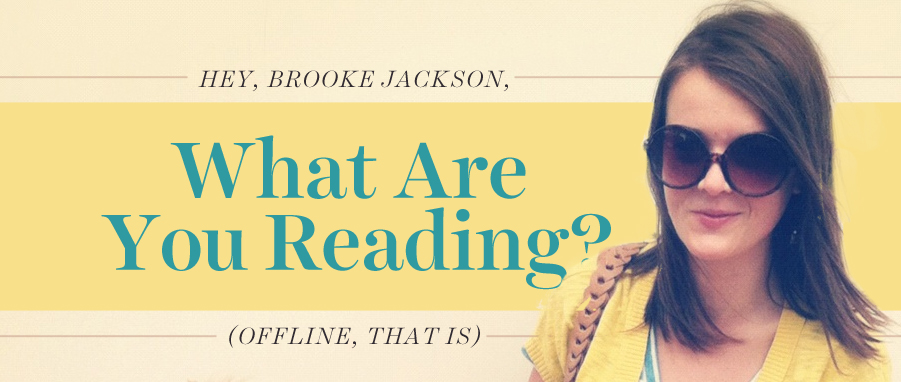
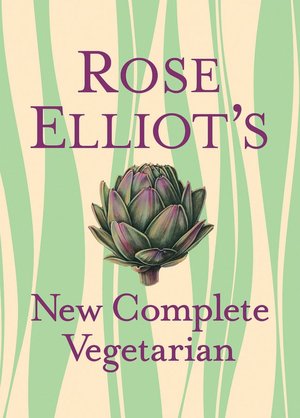 New Complete Vegetarian
by: Rose Elliot
I've been a vegetarian for half of my life and had to get creative in the kitchen after marrying my husband. Cooking meatless meals for someone who enjoys a medium rare steak has its challenges. In order to keep peace at our dining table, I read recipes to learn more about different flavor combinations and cooking techniques. Rose Elliot's New Complete Vegetarian was given to me as a gift, and I'm currently drooling over its every page. With over sixty books under her belt, Rose is Britain's most influential vegetarian/vegan writer. Her ingredients and words are so engulfing you can actually smell the aromas of each course being prepared. This particular cook book contains hundreds of mouth-watering recipes covering a hostess' every need: sweet relishes and tangy salad dressings; veggie infused pastas and rice; made-from-scratch tarts and cheesy quiches; and delectable desserts. Rose's ingredient lists are short and simple which works well for both the intimidated beginner cook or the expert chef. Whether you follow a recipe step-by-step or put your own unique spin on it, this book is the perfect cooking companion.
New Complete Vegetarian
by: Rose Elliot
I've been a vegetarian for half of my life and had to get creative in the kitchen after marrying my husband. Cooking meatless meals for someone who enjoys a medium rare steak has its challenges. In order to keep peace at our dining table, I read recipes to learn more about different flavor combinations and cooking techniques. Rose Elliot's New Complete Vegetarian was given to me as a gift, and I'm currently drooling over its every page. With over sixty books under her belt, Rose is Britain's most influential vegetarian/vegan writer. Her ingredients and words are so engulfing you can actually smell the aromas of each course being prepared. This particular cook book contains hundreds of mouth-watering recipes covering a hostess' every need: sweet relishes and tangy salad dressings; veggie infused pastas and rice; made-from-scratch tarts and cheesy quiches; and delectable desserts. Rose's ingredient lists are short and simple which works well for both the intimidated beginner cook or the expert chef. Whether you follow a recipe step-by-step or put your own unique spin on it, this book is the perfect cooking companion.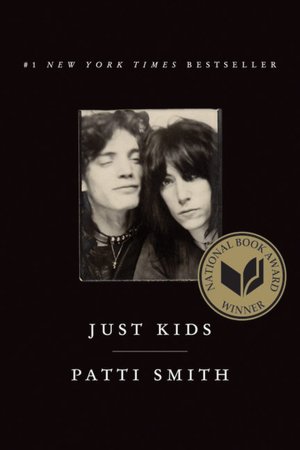 Just Kids
by: Patti Smith
Just Kids is a memoir written by Patti Smith, the “Godmother of Punk.” I could try to summarize this book, but there is so much happening that I can't put my finger on one specific premise. It's an ode to art and music, personal expression and exploration, and companionship and love. Smith moved to New York City during the summer of 1967. It was at the end of a few artistic eras such as the Beat Generation and the Warhol Factory Years, so Smith found herself riding on the coattails of many fascinating artists. Searching for her own masterpiece, she made a vow that her life would be dedicated to creating and sharing her work. On that very night, Robert Mapplethorpe, who is now an iconic photographer, made the same promise to give himself to his art. Later on, while Smith was working at Brentano’s Books on Fifth Avenue, the two crossed paths and quickly became each other’s artistic guide and muse. They searched together while creating, painting, filming, writing, and capturing life. Smith and Mapplethorpe were young artists or "just kids" on the verge of both breakdown and breakthrough. They experimented their way through the late 60's and lived on the forefront of their wildest dreams. During her time at the Hotel Chelsea, Patti also met some of my favorites such as Jimi Hendrix, Bob Dylan, Allen Ginsburg, and Andy Warhol. NYC has always been a melting pot of sensations with a variety of people who have big dreams and enduring stamina. Smith's descriptions are so poetically vivid that I found myself channeling her words as if they were my memories she recanted, constantly dropping the book to close my eyes and breathe. Hooray for empathy! Pick up this book, please!
Just Kids
by: Patti Smith
Just Kids is a memoir written by Patti Smith, the “Godmother of Punk.” I could try to summarize this book, but there is so much happening that I can't put my finger on one specific premise. It's an ode to art and music, personal expression and exploration, and companionship and love. Smith moved to New York City during the summer of 1967. It was at the end of a few artistic eras such as the Beat Generation and the Warhol Factory Years, so Smith found herself riding on the coattails of many fascinating artists. Searching for her own masterpiece, she made a vow that her life would be dedicated to creating and sharing her work. On that very night, Robert Mapplethorpe, who is now an iconic photographer, made the same promise to give himself to his art. Later on, while Smith was working at Brentano’s Books on Fifth Avenue, the two crossed paths and quickly became each other’s artistic guide and muse. They searched together while creating, painting, filming, writing, and capturing life. Smith and Mapplethorpe were young artists or "just kids" on the verge of both breakdown and breakthrough. They experimented their way through the late 60's and lived on the forefront of their wildest dreams. During her time at the Hotel Chelsea, Patti also met some of my favorites such as Jimi Hendrix, Bob Dylan, Allen Ginsburg, and Andy Warhol. NYC has always been a melting pot of sensations with a variety of people who have big dreams and enduring stamina. Smith's descriptions are so poetically vivid that I found myself channeling her words as if they were my memories she recanted, constantly dropping the book to close my eyes and breathe. Hooray for empathy! Pick up this book, please! Thin Air: Encounters in the Himalayas
by: Greg Child
A few months ago, I read the story of Jon Krakauer's experience on one of Mount Everest's most fatal seasons and have been semi-obsessed with Himalayan adventures ever since. I love every aspect of it: the physical challenges the human body endures to climb these peaks; the devotion and sometimes detrimental commitment of mountaineers to reach the highest places on Earth; and the emotional and mental battles that altitude, stress and ego add to the journey. After listening to me share stories of the Himalayas as though I was part of the trek myself, a friend gave Thin Air to me. The book sweeps you away into a range of breath-taking mountains while sharing some of the most riveting stories of Himalayan treks. One feels the roller coaster of excitement, the heartache from the innate barriers of being in politically delicate regions of the world to fulfill their dreams, the language struggles existing in crucial relationships, the undefinable joy of reaching their goals, and the bonding and loss of friends. I highly recommend this read for those who are seeking an adventure in life.
Thin Air: Encounters in the Himalayas
by: Greg Child
A few months ago, I read the story of Jon Krakauer's experience on one of Mount Everest's most fatal seasons and have been semi-obsessed with Himalayan adventures ever since. I love every aspect of it: the physical challenges the human body endures to climb these peaks; the devotion and sometimes detrimental commitment of mountaineers to reach the highest places on Earth; and the emotional and mental battles that altitude, stress and ego add to the journey. After listening to me share stories of the Himalayas as though I was part of the trek myself, a friend gave Thin Air to me. The book sweeps you away into a range of breath-taking mountains while sharing some of the most riveting stories of Himalayan treks. One feels the roller coaster of excitement, the heartache from the innate barriers of being in politically delicate regions of the world to fulfill their dreams, the language struggles existing in crucial relationships, the undefinable joy of reaching their goals, and the bonding and loss of friends. I highly recommend this read for those who are seeking an adventure in life.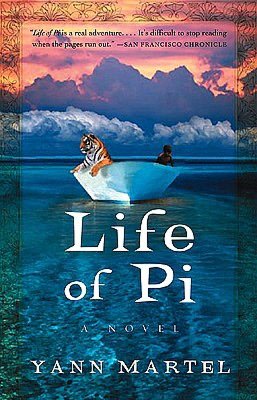 Life of Pi
by: Yann Martel
This is the story of a boy named Pi, who leaves India with his family to find a new life in Canada. While at sea, tragedy strikes and the unthinkable happens: Pi is the lone human survivor of a shipwreck and is stranded aboard a small lifeboat with an unusual assortment of companions. His only companions consist of a hyena, zebra, orangutan and Bengal tiger. Pi's courage and determination are tested as he must learn to survive on his own in the vast ocean while keeping the distraught wild animals at bay. Pi's story is one of hope, courage and self-preservation in the most unnatural of circumstances.
Life of Pi
by: Yann Martel
This is the story of a boy named Pi, who leaves India with his family to find a new life in Canada. While at sea, tragedy strikes and the unthinkable happens: Pi is the lone human survivor of a shipwreck and is stranded aboard a small lifeboat with an unusual assortment of companions. His only companions consist of a hyena, zebra, orangutan and Bengal tiger. Pi's courage and determination are tested as he must learn to survive on his own in the vast ocean while keeping the distraught wild animals at bay. Pi's story is one of hope, courage and self-preservation in the most unnatural of circumstances. Killing Lincoln<
by: Bill O'Reilly & Martin Dugard
This summer I brushed up on my American history by reading Killing Lincoln. I´m sure that sounds like a dreaded 11th grade required reading assignment, but I promise this book is not what you think. There will be no exam afterwards and, unlike me, you probably won´t be asked to write a synopsis of what you´ve read. Yes, it is the true story of the Lincoln assassination in 1865, but it's also a thriller told from the perspective of both the assassin and the victim. As we all know, John Wilkes Booth was the man who shot the President. But what else do you know about him? This book takes you inside his world and details his thoughts, relationships and movements, especially in the days leading up to the murder and the days immediately following. Lincoln, on the other hand, becomes a character that you wish didn´t have to die as you are also taken away from John Wilkes Booth and into the White House to witness his conversations and fears in the days leading up to his fateful trip to the Ford theater. I found myself hoping that history would somehow rewrite itself and only wish more historic events were written this way.
Killing Lincoln<
by: Bill O'Reilly & Martin Dugard
This summer I brushed up on my American history by reading Killing Lincoln. I´m sure that sounds like a dreaded 11th grade required reading assignment, but I promise this book is not what you think. There will be no exam afterwards and, unlike me, you probably won´t be asked to write a synopsis of what you´ve read. Yes, it is the true story of the Lincoln assassination in 1865, but it's also a thriller told from the perspective of both the assassin and the victim. As we all know, John Wilkes Booth was the man who shot the President. But what else do you know about him? This book takes you inside his world and details his thoughts, relationships and movements, especially in the days leading up to the murder and the days immediately following. Lincoln, on the other hand, becomes a character that you wish didn´t have to die as you are also taken away from John Wilkes Booth and into the White House to witness his conversations and fears in the days leading up to his fateful trip to the Ford theater. I found myself hoping that history would somehow rewrite itself and only wish more historic events were written this way.
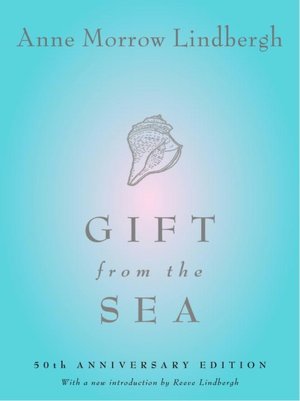
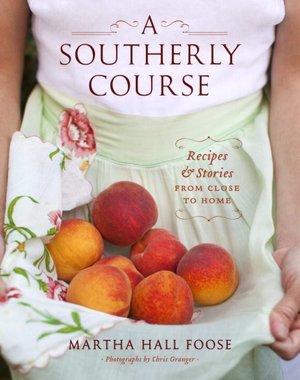
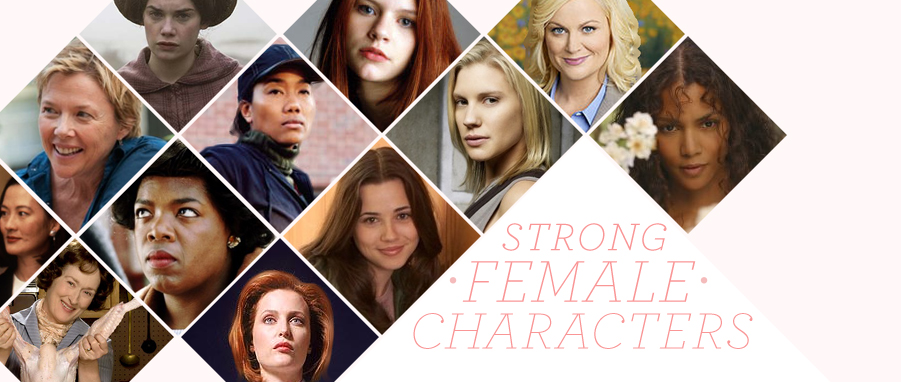

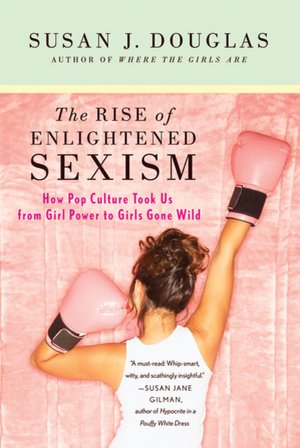
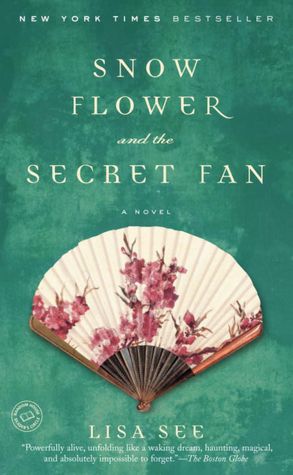 Snow Flower and the Secret Fan
Snow Flower and the Secret Fan The Paris Wife
The Paris Wife The Collected Stories of Lydia Davis
The Collected Stories of Lydia Davis How to Train Your Dragon
How to Train Your Dragon




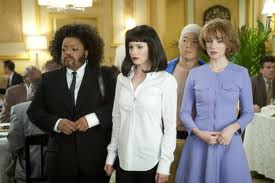
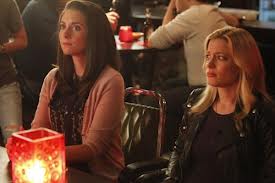
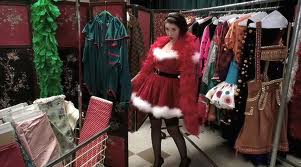


 I recently picked up The Big House: A Century in the Life of an American Summer Home by George Howe Colt. It's a story of a summer house, like this one, and the family that inhabits it. I just started the book, but I love the way that the house and the land are intertwined with the family and its history. The author's memories of his grandparents are similar to the memories that Jordy has, and likely similar to the memories that Emi will have as she grows up. It was handed to me as soon as I arrived, looking for something to read. I just finished 1Q84, and needed something to thumb through at the beach in-between discussions of the latest article in People or Frank Rich's column that morning. Reading is an integral weft in the social fabric of the ladies at camp. We love books, we love to read, and we love to talk about what we're reading. Here's a sample of what's made an appearance at the beach this week. If some of the reviews seem short, it's because I made people tell me what they were reading as they were running through the house on their way to the beach, the grocery store, or to watch the Olympics (the only time, save for the U.S. Open, that the television is allowed on).
I recently picked up The Big House: A Century in the Life of an American Summer Home by George Howe Colt. It's a story of a summer house, like this one, and the family that inhabits it. I just started the book, but I love the way that the house and the land are intertwined with the family and its history. The author's memories of his grandparents are similar to the memories that Jordy has, and likely similar to the memories that Emi will have as she grows up. It was handed to me as soon as I arrived, looking for something to read. I just finished 1Q84, and needed something to thumb through at the beach in-between discussions of the latest article in People or Frank Rich's column that morning. Reading is an integral weft in the social fabric of the ladies at camp. We love books, we love to read, and we love to talk about what we're reading. Here's a sample of what's made an appearance at the beach this week. If some of the reviews seem short, it's because I made people tell me what they were reading as they were running through the house on their way to the beach, the grocery store, or to watch the Olympics (the only time, save for the U.S. Open, that the television is allowed on). Tender at the Bone, Ruth Reichel
"I love it. It's a memoir of her childhood with a very crazy mother and how food became so important in her life. She comes from a really crazy family, and she just by happenstance gets connected to a family that loves food, and she discovers that when the world isn't working well, you can make a good meal and all is suddenly right with the world."
Tender at the Bone, Ruth Reichel
"I love it. It's a memoir of her childhood with a very crazy mother and how food became so important in her life. She comes from a really crazy family, and she just by happenstance gets connected to a family that loves food, and she discovers that when the world isn't working well, you can make a good meal and all is suddenly right with the world." War and Peace, Leo Tolstoy
"It's a book that I never in a million years thought I would read (even though I'm an English teacher), but my book club decided they would do it. I am fully immersed in it. The first 100 or so pages were difficult just because of the many characters and getting the names straight (and feeling intimidated by the fact that it's War and Peace). But once you get over that, Tolstoy is so fluid and so all-encompassing and he understands human nature and the big picture so well, but he includes detail to make it seem here and now. The writing is a narrative, so you read it for a story, but you also get a sense of the history and the philosophical and ethical issues that people thought about at that time in Russia (and even now): the nobility and the peasants; why people go to war. You're also brought back by the everydayness of the characters that he creates, and they become real. It's a great read. We were supposed to read 200 pages and meet and read another 200 pages, but I've almost finished it because I've become so involved with it."
War and Peace, Leo Tolstoy
"It's a book that I never in a million years thought I would read (even though I'm an English teacher), but my book club decided they would do it. I am fully immersed in it. The first 100 or so pages were difficult just because of the many characters and getting the names straight (and feeling intimidated by the fact that it's War and Peace). But once you get over that, Tolstoy is so fluid and so all-encompassing and he understands human nature and the big picture so well, but he includes detail to make it seem here and now. The writing is a narrative, so you read it for a story, but you also get a sense of the history and the philosophical and ethical issues that people thought about at that time in Russia (and even now): the nobility and the peasants; why people go to war. You're also brought back by the everydayness of the characters that he creates, and they become real. It's a great read. We were supposed to read 200 pages and meet and read another 200 pages, but I've almost finished it because I've become so involved with it." "I just finished Gone Girl, by Gillian Flynn. I loved it up until the very end, but I couldn't put it down---I was sneaking reads during work. It was a page turner, and you didn't know what was happening. It was a good mystery, and how you felt about the characters changed throughout the book at different points. I read The Art of Racing in the Rain at the beginning of the summer. It's written from the point of view of a dog---[she looks at me raising my eyebrows and goes, "I know, but it's really good."] the dog is this smart being, but because of how he was created (with a floppy tongue, no thumbs)---he's stuck with his thoughts and knowledge of things but no way to express himself. I just started reading Sharp Objects."
"I just finished Gone Girl, by Gillian Flynn. I loved it up until the very end, but I couldn't put it down---I was sneaking reads during work. It was a page turner, and you didn't know what was happening. It was a good mystery, and how you felt about the characters changed throughout the book at different points. I read The Art of Racing in the Rain at the beginning of the summer. It's written from the point of view of a dog---[she looks at me raising my eyebrows and goes, "I know, but it's really good."] the dog is this smart being, but because of how he was created (with a floppy tongue, no thumbs)---he's stuck with his thoughts and knowledge of things but no way to express himself. I just started reading Sharp Objects." The Fingertips of Duncan Dorfman, Meg Wolitzer
"It's about this dude who plays Scrabble, and he has a power in his fingers to read things with his fingertips. They're in a tournament in Florida. I got it for my birthday from Grandma and Grandpa. It was on the
The Fingertips of Duncan Dorfman, Meg Wolitzer
"It's about this dude who plays Scrabble, and he has a power in his fingers to read things with his fingertips. They're in a tournament in Florida. I got it for my birthday from Grandma and Grandpa. It was on the  The Son of Neptune, Rick Riordan
"It's the second in a series the Heros of Olympus, which is the sequel series to the Percy Jackson series. It's about a boy, Percy Jackson, who's memory is taken by Hera/Juno, and he loses 8 months of his life with the wolf Lupa and her pack, learning to fight. Then he leaves the wolves and journeys to the Roman demigod camp and he's originally from the Greek demigod camp. I read the first one in the series and it was about a boy, Jason, who gets the same thing but goes from the Roman camp to the Greek camp, and he has to unite the camps before the prophesy can come true. It's so good, I've read it seven times."
The Son of Neptune, Rick Riordan
"It's the second in a series the Heros of Olympus, which is the sequel series to the Percy Jackson series. It's about a boy, Percy Jackson, who's memory is taken by Hera/Juno, and he loses 8 months of his life with the wolf Lupa and her pack, learning to fight. Then he leaves the wolves and journeys to the Roman demigod camp and he's originally from the Greek demigod camp. I read the first one in the series and it was about a boy, Jason, who gets the same thing but goes from the Roman camp to the Greek camp, and he has to unite the camps before the prophesy can come true. It's so good, I've read it seven times."



